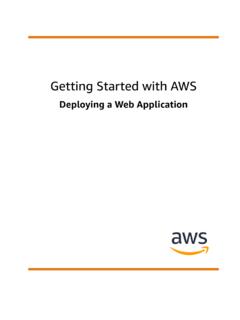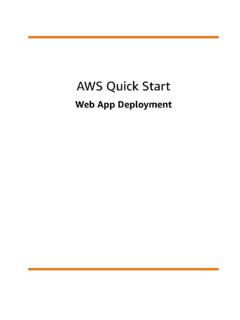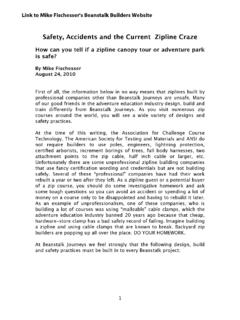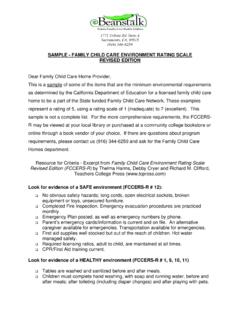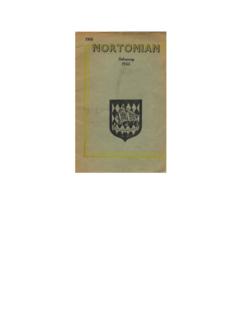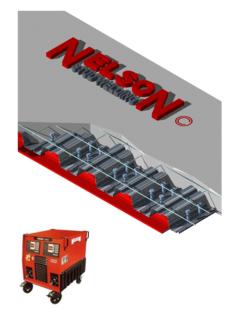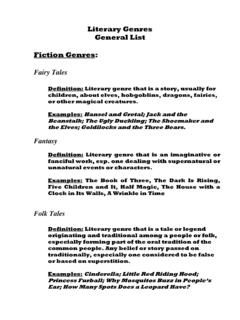Transcription of Jim and the Beanstalk - PBworks
1 Jim and the Beanstalk Age group it would suit Grade 1-3 Mathematical strands and concepts explored in the book Measurement Students will learn about length, height, centimeters, millimeters Think about the possible activities that lend themselves to the story (follow-up?) Jim spends a lot of time measuring different parts of the giant s body. Work with a partner to measure some of your body parts. Use centimeters and millimeters. Think about what equipment you need to use. Measure some of the items in the illustrations from the book. If they were real, do you think they would actually be that size? Why or why not? Explain your thinking. Explain which tools you used to measure your body. Which tools worked best for the job? Why? What difficulties did you have? Cross-curricular links Sir Cumference and the First Round Table By Cindy Neuschwander Age group it would suit Grade 4-6 Mathematical strands and concepts explored in the book Measurement Students will understand the terms and measure circumference, diameter, and radius.
2 (This lesson also incorporates the sub goal of naming geometric shapes.) Think about the possible activities that lend themselves to the story (follow-up?) See below Cross-curricular links History, Literacy Lesson Created by: Toni Haddock, Eugene Field Elementary, Manhattan, KS Lesson Description: Materials Sir Cumference and the First Round Table, paper cut into a 5 by 20 rectangle, a piece of string about a meter long for each student, circular objects, recording sheet 1. Launching the Lesson (engage): a) Show students the book and read the title. Ask them if they ve heard of Sir Cumference or a round table. (Hopefully someone will have heard of the word circumference and perhaps even Camelot, King Arthur, or the Round Table.) 2. Developing the Lesson: a) Read Sir Cumference and the First Round Table. As you read the book, recreate the tables shown in the story.
3 Call attention to the names of the shapes: rectangle, square, triangle, rectangle, parallelogram. (Unless you have lots of time and patience, it is too complicated to have each child make the shapes. So do it as a demonstration.) b) After reading the story, review the meanings of the words circumference, diameter, and radius. Then allow students to choose several circular objects, and use string and a ruler to measure circumference, diameter and radius. Write measurements on recording sheet. 3. Closure/ Discussion/Elaboration: a) After everyone is finished allow time for students to find others who have measured the same objects. They should check to see if they got the same measurement. If not, they can measure again together. b) As a class, review the meanings of circumference, diameter and radius. As a follow up, on another day, give a short assessment with a circle on it.
4 Without reviewing the meaning, ask students to measure the three parts of the circle. After hearing this story, students should never confuse the three terms! Anno s Mysterious Multiplying Jar By Masaichiro and Mitsumasa Anno Age group it would suit Grade 6-8 Mathematical strands and concepts explored in the book Multiplication, Factorials and Word Problems Students will learn the meaning of the word "factorial" and how to apply the factorial concept to describe a special kind of numerical relationship. Think about the possible activities that lend themselves to the story (follow-up?) See below There is a word problem idea for desk arrangements at the back of the book. Cross-curricular links Literacy/History students write their own story mentioning objects from their unit of study Lesson Created by: Kathy Buyle, Susan B.
5 Anthony Middle School, Manhattan, KS Lesson Description: Materials Anno's Mysterious Multiplying Jar by Masaichiro and Mitsumasa Anno (book), graph paper, pencils, paper 1. Launching the lesson (engage): a. Read the story b. Stop reading on the page that poses the question, "How many jars were in all the boxes together?" c. Ask the students if they were able to keep track of the number of jars as the story was being read. d. Go back to the beginning of the story and review the numerical pattern and ask the students how they would determine the number of jars in all the boxes. Discuss their suggestions and use pencil and paper to work out a solution. 2. Developing the lesson a. Continue to read the story starting with: "The answer is surprising. There were 10! jars." Show the students the way 10! is written and go on with reading until the end of the story.
6 B. As the rest of the story is read have the students place dots on the graph paper just as shown in the book. As the story continues, the students will discover that it is impossible to keep track of the numbers of things by using dots. c. Point out the use of the factorial way of solving the problem as it is written in the book. By the end of the book, they will have gotten the point of solving the question of, "How many jars were in all the boxes together?" d. The students will apply their knowledge of using factorials by solving the desk-arranging problem in the book. First they can use graph paper and then they will describe the possible arrangements using factorials. 3. Closure, Discussion, Elaboration: a. The students can extend this lesson to determining the possible number of arrangements of seats in their classroom.
7 B. Students can determine other possibilities The Greedy Triangle By Marilyn Burns Age group it would suit Grade 1 Mathematical strands and concepts explored in the book Geometry Students will build on their understanding of geometric shapes. Think about the possible activities that lend themselves to the story (follow-up?) See below Cross-curricular links Lesson created by: Jeanie Glessner Lesson Description: Materials: The Greedy Triangle by Marilyn Burns Pattern blocks, paper pattern blocks, gluesticks, pattern sheets from textbook for each different Activity, textbook Investigations in Number, Data, and Space by Susan Russell, Douglas Clements, and Julie Sarama, Dale Seymour Publications, 1998 1. DOING THE LESSON a. Engage: Teacher will read the book to the class. During the reading, point out to students that shapes can change the number of sides and points that they have and that some shapes can be put together to make another shape.
8 B. Explore: After reading the story, the teacher will give each student some pattern blocks and copies of the "fill-in the shape" sheets from the textbook. Explain to the students that they may fill in the shape using whatever pattern blocks they choose. The student will record at the bottom of the sheet specifically how many of each kid of pattern blocks that they used in their design for a total number of blocks used. c. Elaboration: Students will use creativity to create their own design using a specific number of pattern blocks, as specified by the teacher or sheet. Another activity will have the students fill-in the shape outline three different ways. As the students are working, ask them if they think they can use more or fewer pattern blocks. The students will be asked to make observations about their creations and be able to share their thinking during design with the group.
9 Such questions to ask could be, "Do you think that 5 is the fewest number of blocks you could have used in this outline? Why do you think so?" d. Extension: Students will choose their favourite from the above mentioned three activities. The students will use paper pattern blocks to complete their favourite, by gluing the paper pattern blocks into place. Pattern blocks could also be used as an introduction into fractions in first grade since equal parts are needed to make the whole shape. Pigs Will Be Pigs By Amy Axelrod Age group it would suit Grade 3-5 Mathematical strands and concepts explored in the book Measurement - Money Students will be able to correctly plan and calculate the total amount of money needed for specific items ordered from a given menu of foods Think about the possible activities that lend themselves to the story (follow-up?)
10 See below Cross-curricular links In our economic world, share ideas for being the owner of the restaurant. What skills would be necessary for the business to be successful? Decision making skills Lesson created by: Marla Schmidt, Lee Elementary School, Manhattan, KS Lesson Description: Materials The book Pigs Will Be Pigs by Amy Axelrod. Individual copies for students of the menu itself listed in the book; paper and pencil. 1. Launch the lesson---Engage. Read aloud to the students the story, Pigs Will Be Pigs, by Amy Axelrod. 2. Discuss the story together. Let students share the situation where the pigs plan to eat together. Note the menu items and the cost of each individual item. 3. Allow students to make correct combinations of food items and the calculated cost for each example. DEVELOPING THE LESSON 4. Have students share experiences of eating out together with family or friends.
